Google Nexus 9: Preliminary Findings
by Joshua Ho on November 3, 2014 1:00 PM ESTGPU Performance
Following along the same lines, we can also take a look at the GPU performance of Tegra13x in the Nexus 9. This really shouldn’t change too much though as the same GPU is used at the same maximum clock speed of 852 MHz. For those that are unfamiliar with the GPU in the Tegra K1, this is effectively a scaled-down version of their desktop Kepler GPUs.

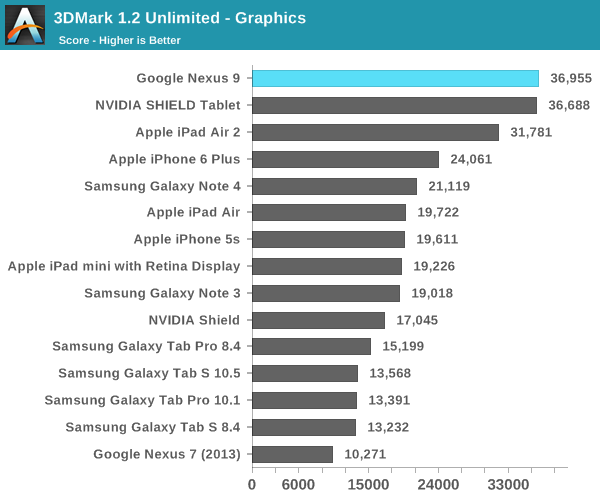
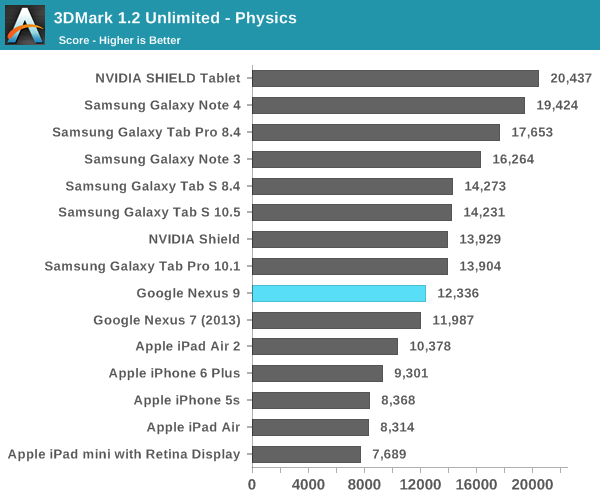
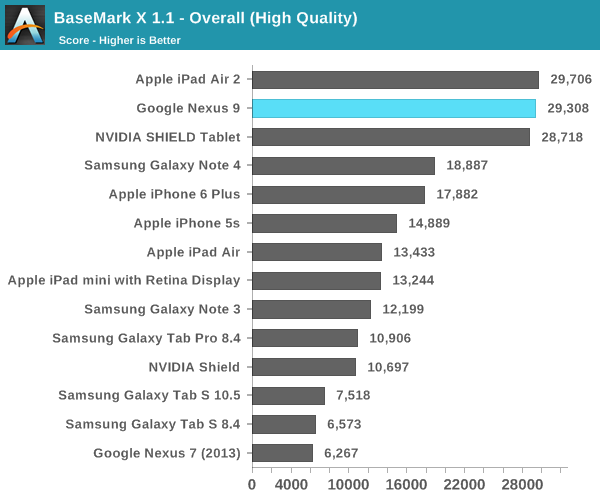
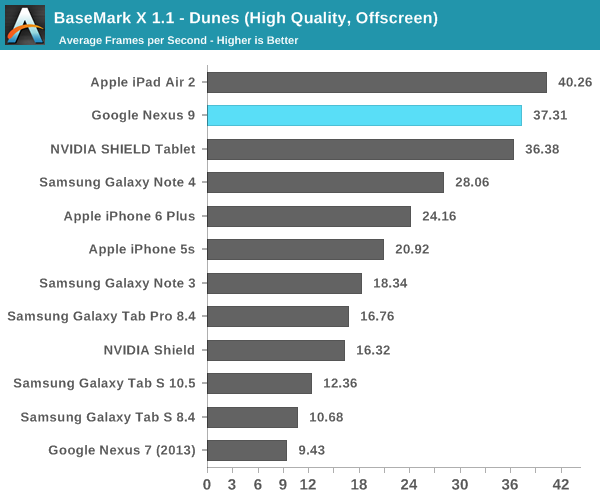
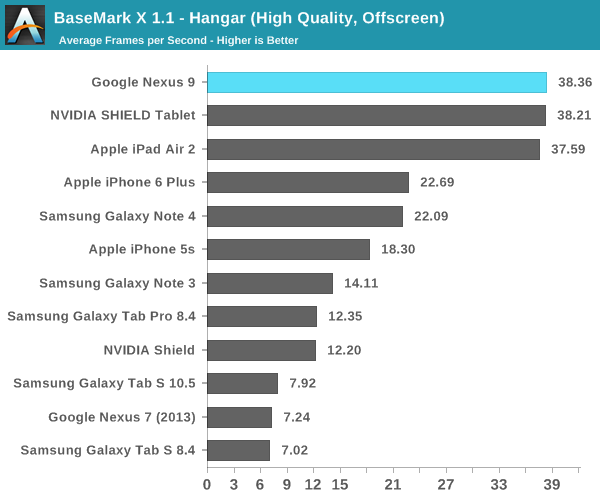
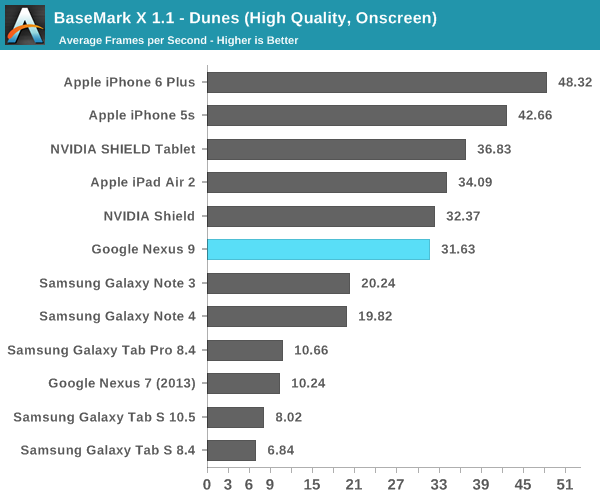

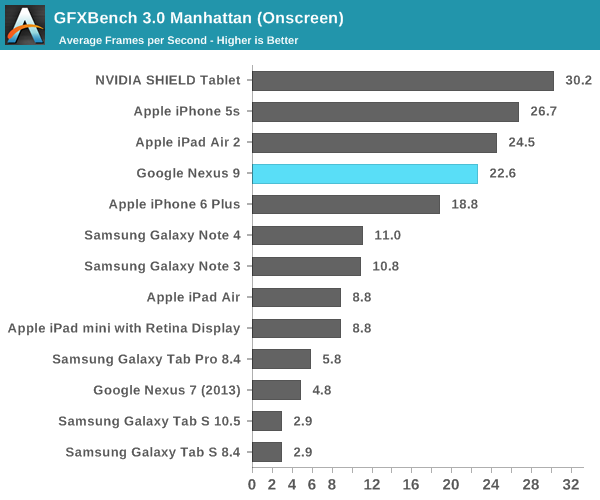
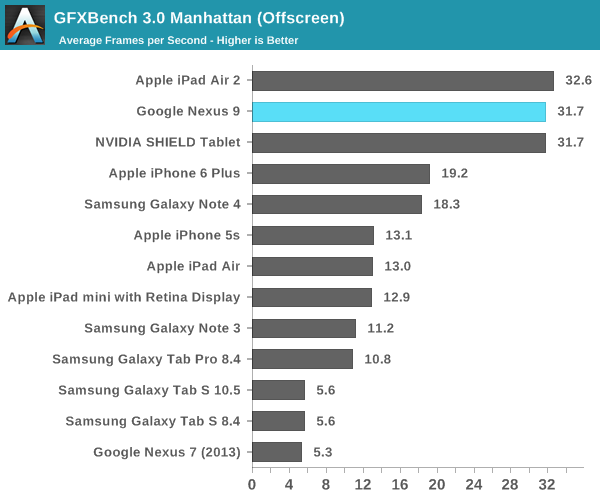
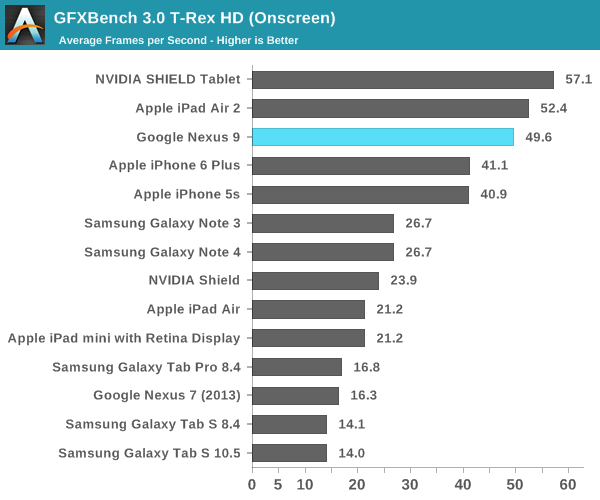
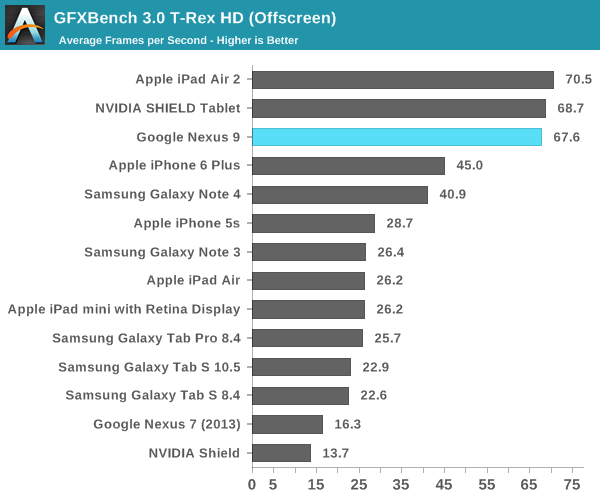
As one can see, the Nexus 9 is effectively equivalent to the SHIELD Tablet in GPU performance. The one anomaly here is 3DMark, which seems to be mostly due to differences in CPU. It's likely that this isn't representative of performance though, as 3DMark's physics test seems to perform better on CPU configurations that rely on larger numbers of cores and higher clock speeds. In the purer GPU tests like Basemark X and GFXBench performance across the board is effectively identical to the Cortex A15 variant of the Tegra K1.
Initial Conclusions
For the most part, the Nexus 9 shows some level of promise as a tablet. While Denver in NVIDIA’s Tegra K1 is a bit bimodal in performance, with sufficient optimization it has immense promise from a sheer performance aspect. While the SoC alone makes the Nexus 9 a fascinating device to look at, the rest of the package has a great deal of potential. The minimalistic design of the device, combined with good material design and stereo front-facing speakers really shows the high-end aspirations of this tablet. While we haven't received anything in the way of accessories, the keyboard folio case seems to be a way of pushing the tablet formfactor in a new direction. This is especially evident when seeing the focus on previous Nexus tablets which seemed to assume touch-only input.
While only a first look, there’s definitely a lot to be impressed by here. However, it will take a full review to really determine whether the Nexus 9 can compete with the iPad Air 2 as a tablet is more than just a function of battery life and SoC performance. In addition, it's hard to draw any real conclusions about this tablet quite yet as the software we received in no way represents a shipping build. Even if inactive, loggers and debug tools generally reduce performance, and it's likely that a great deal of optimization has occurred in the two months since this software build was completed. Once again, we haven't been able to get a newer build, but the full review should be done with shipping firmware.










146 Comments
View All Comments
baycorn - Thursday, November 27, 2014 - link
when is the review coming??? I was going to get a Nexus 9 but now aftet bad reviews am seriously thinking about an ipad mini 2 - waiting for the always great anandtech review before making final decision!jji7skyline - Sunday, November 30, 2014 - link
I gave up waiting for the review to decide between the Nexus 9 and the iPad Air 2. I just bought the Nexus 9 a few days ago and I am waiting for it to ship.Maleficum - Tuesday, December 30, 2014 - link
I think the full review is delayed so much because Anandtech is currently consulting lawyers fearing nVidia's wrath. The K1 Denver is the biggest benchmark cheater, Anandtech found it out, and....... you know the story between 3DMark and nVidia.To be clear: the K1 Denver is an *emulator*, NOT a custom designed ARM. It's so easy to write an emulator that cheats primitive, predictable, synthetic benchmarks.
For example, write a function that does hundreds and thousands times memcpy on same addresses. With the -O3 option, the compiler optimizes the function so that it does memcpy only once.
Benchmarks are written in a way that the resulting machine codes actually do all the iterations, but with an emulator that translates these machine codes to a different one, it can easily mimic the compiler's behavior mentioned above. Of course, it would be "optimization" by nVidia's definition.
This kind of "optimizations" were done before by Transmeta, and K1 Denver is a reincarnation of Transmeta's Crusoe/Efficeon. And we all know that nVidia .......... well, the rest is up to you guys.
http://www.vanshardware.com/articles/2003/07/03071...
PS: Sunspider is one of very few "uncheatable" benchmarks, and you know how Denver fares in that.
dragonsqrrl - Thursday, January 15, 2015 - link
Soo... I know I said I'd wait for a quality analysis, but isn't this a bit much? Are we going to get a Nexus 9 review Josh?snoukkis - Friday, January 23, 2015 - link
Yup, still waiting for the review with the final shipping product...Vinny DePaul - Saturday, August 22, 2015 - link
I hope someone will see this and help me. I ran those benchmarks on my Nexus 9 and mine is almost 200% slower, i.e., double sunspider score. Did I get a fake Nexus 9?